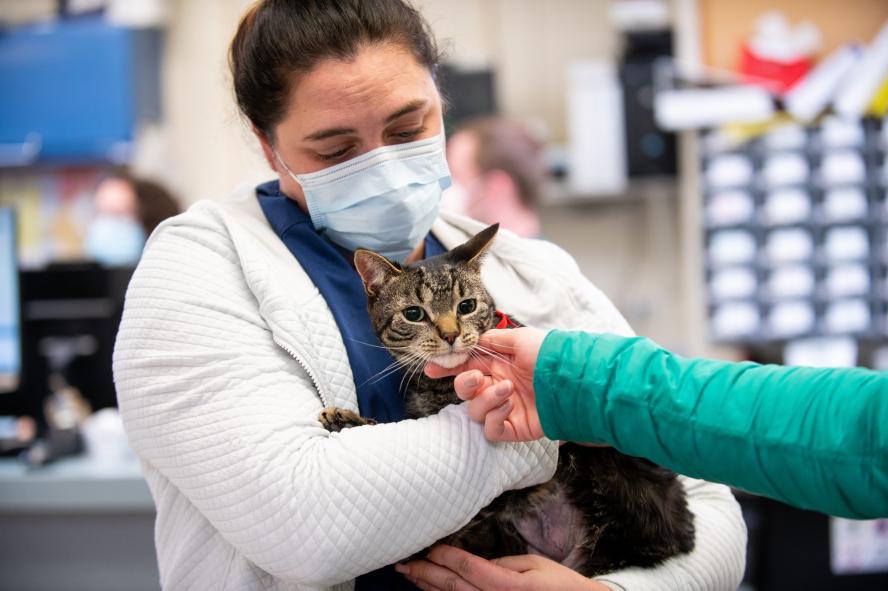-
About
- Leadership & Faculty
- News & Events
-
Academics
- Graduate
- Advanced Clinical Training
- Continuing Education
-
Student Life
-
Research
-
Hospitals & Clinics
- Emergency Care
- Hospital Services
-
Community Outreach
- Volunteer
February is Spay and Neuter Awareness Month
A Q & A with Dr. Emily McCobb, Director of Shelter and Community Medicine at Cummings School

Thanks to spay/neuter efforts in our region over the past 20 years, shelter euthanasia has nearly been eliminated in New England. Most animal welfare organizations in the region now serve more animals in the community than animals that they take into the shelter because most owned animals are spayed and neutered.
A Q & A with Dr. Emily McCobb, V00 VG02, MS, D.V.M., B.S., DACVAA, Clinical Associate Professor, Director, Shelter and Community Medicine, Assistant Director, Center for Animals and Public Policy.
1: What are the top five things people should know about spaying/neutering pets and animals?
Spaying and neutering most cats and dogs is essential to control companion animal populations. While we are learning more about the health impacts of spaying and neutering, overall the animal welfare benefits to the widespread animal population far outweigh individual animal health risks. Spay neuter surgery is easy, affordable, and safe for your pet. At Cummings School our high-quality, high-volume spay-neuter program is an essential component of how we teach veterinary students surgical skills in a humane and ethical manner.
2: What are the current issues with dog and cat populations that make spaying and neutering so vital?
The number of dogs and cats that are euthanized in animal shelters has been dramatically reduced due to widespread spaying and neutering. When I started as a veterinarian more than 20 years ago, 20 million healthy dogs and cats died every year in animal shelters because there were too many of them. Today that number has been reduced to less than 1 million annually and, in many places like New England, healthy adoptable animals do not have to be euthanized.
3: What is the environmental impact of an overpopulation of dogs and cats?
We don’t have an overpopulation of dogs and cats in New England. In fact, many experts believe we have a dog shortage. However, the unchecked reproduction of free-roaming cats can have severe consequences for the environment, particularly on native wildlife species. That is why we recommend that all cats be spayed and neutered to control the population and that pet cats be kept indoors.
4: As an owner, why spay/neuter your dog or cat?
Pet owners should consult with their veterinarian to determine the best solution for their pet. In general, all cats should be spayed and neutered. Spaying will prevent mammary cancer and pyometra in female cats. Neutering will prevent unwanted behaviors in male cats, such as roaming and spraying. For dogs, the situation is more complicated but spaying females will prevent pyometra and mammary cancer as well as dealing with an animal in heat. For males, neutering them will prevent testicular cancer.
5: How does the Luke and Lily Lerner Spay/Neuter Clinic help?
Each year at the Luke and Lily Lerner Spay/Neuter Clinic we spay and neuter over 2,000 dogs, cats, and rabbits. We support our local animal control officers and rescue groups to ensure that they can spay and neuter the animals that they adopt. We also assist low-income pet owners and community members with free-roaming cats. Our program is an essential part of the core surgical training for veterinary students which provides them with basic surgery skills in a humane and ethical manner.